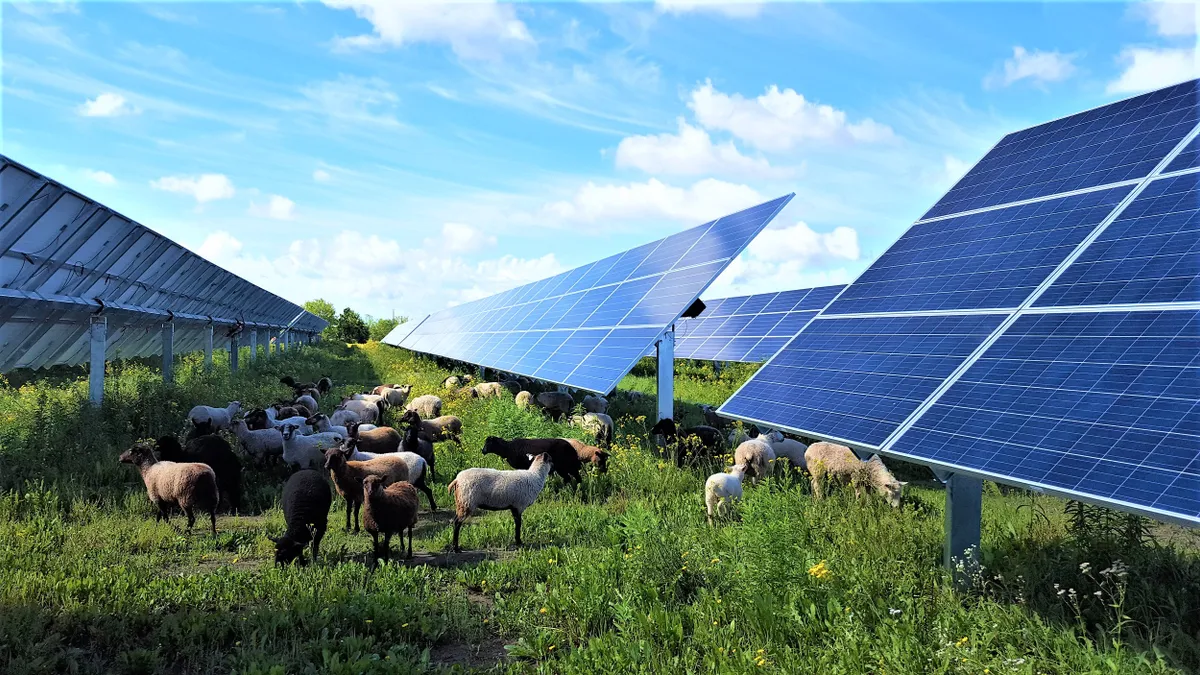Dive Brief:
- Although nine out of 10 Leaderboard utilities the Smart Electric Power Alliance surveyed said they have established 100% clean energy supply targets, just 18% of all 135 utility respondents have hit the halfway mark in meeting those targets, according to survey results released Wednesday.
- Utilities with more ambitious, detailed decarbonization plans have made the most progress toward their goals, according to SEPA.
- Two of the 10 utilities on SEPA's “Utility Transformation Leaderboard” rank electric vehicles, energy storage, grid modernization and equity among their top priorities.
Dive Insight:
Dozens of utilities say they have made great strides toward reducing carbon emissions, according to a new SEPA survey. But with the vast majority still well below the halfway mark, the alliance sees both hope for the future and room for improvement.
Of the 135 utilities that responded to the survey, 48 said they source up to 30% of their energy from carbon-free or carbon-neutral sources. Another 37 said their power was 31-50% clean, and 19 said they had surpassed the 50% mark.
“Energy efficiency and renewable energy progress have outstripped all expectations,” Ralph Cavanagh, co-director of the climate and clean energy program at the Natural Resources Defense Council, said during the survey's online release event. “But this is also an announcement reminding us that we can't be complacent. The progress these utilities have achieved needs to accelerate.”
Several patterns have emerged, based on survey responses from the utilities reporting the greatest progress toward decarbonization, according to Sharon Allan, chief strategy officer for SEPA.
The utilities that have made the most progress to date were those that started with the strongest, most detailed commitments to their decarbonization goals. Setting goals with specific targets and milestones appears to be an important first step in reducing carbon emissions, she said.
The most successful companies also approached decarbonization with a holistic mindset, Allan said. They approached their goals as a companywide transformation that would impact all aspects of their business, not just energy generation. This transformation also included company culture and leadership, Allan said, noting that 10% of survey respondents had linked executive compensation to the company's emissions performance.
Finally, the most successful companies also collaborate frequently with stakeholders and other partners, such as research universities, Allan said.
Seattle City Light, one of the top 10 utilities on SEPA's “Utility Transformation Leaderboard,” has set emissions goals and investment priorities as prompted by extensive community engagement, CEO Debra Smith said.
“We need to make environmental and technological progress,” Smith said, “but we need to do so in partnership with the communities we serve, and do so in an equitable manner.”
Grid modernization will also play a key role in reducing emissions and providing equitable access to clean energy in the future, Smith said.
Finding new ways for customers to access clean energy has become a “source of pride” at Consolidated Edison, according to company president Timothy Cawley. Con Edison also ranked among the top 10 emissions reduction leaders SEPA identified.
Cawley said his company is currently focused on installing 120 publicly available quick-charging plugs for EVs in New York City's five boroughs, and it had recently announced a 100 MW energy storage project in Queens.
“We support New York's aggressive energy goals,” Cawley said, “and we are doing our part to achieve them.”
Correction: A previous version of this story misstated some of the results of SEPA's survey.














